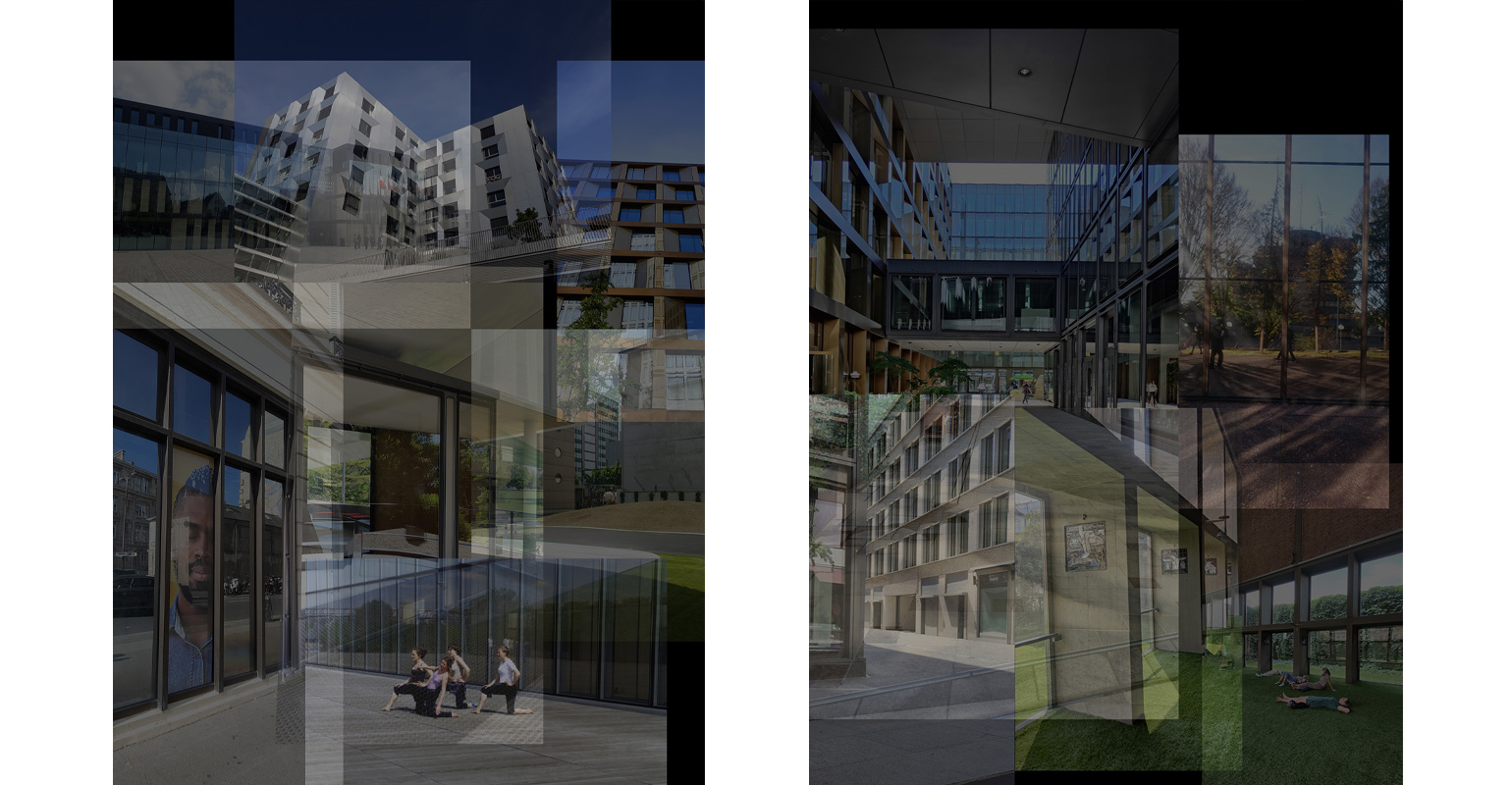Space-Image, soloshow, Atelier Martel Architecture, Paris.
Download the press file (including an interview – in French) on the agency’s website.
The exhibition includes:
– 3 series photomontages “Windows”, “Inside-Out” and “Négarchitecture”, 2022. Pigment inkjet print on Hahnemühle FineArt paper. Dim: 30 x 40 cm. Edition of 5 prints (+ 2 E.A.)
– an image animation “Ocean of Images”, 2023. 3′ (loop) produced by Lab 1703. Edition of 5.
– 3 conceptual diagrams “Real/Fake”, dim 40 x 60 cm; “Datatopia”, dim 60x 80 cm; and Speculation on Value-Image, dim 15x21cm. Edition of 25.
Presentation by the agency’s curator
For her second exhibition at Atelier Martel, Raphaële Bidault-Waddington presents work directly related to architecture. She questions the urban space and its images (its constructions, its imaginaries), and the capacity of the latter to generate new spatial fictions.
In the course of her wanderings through urban space, Raphaële Bidault-Waddington has developed a practice of collecting photographic images that serve as a database for her photomontages. Here, images are interwoven, assembled and recomposed. If individually they belong to specific places, together they create new spaces: it’s no longer a question of knowing where the image was actually taken, but rather, by decontextualizing it, of thinking of this assemblage of images as a new real of reference. By following a method and protocol of digital recomposition of her images (for the choice and arrangement of photographs), the artist questions the very way in which reality is constructed.
In this exhibition, Raphaële Bidault-Waddington explores how images construct a new frontier between the fictional and the real. The artist’s starting point is the observation that the real is not opposed to the false, that the imaginary is not opposed to the real: everything is a construction, whether social, aesthetic or visual. Consequently, the panoptic vision that aims to perceive the “whole”, the space in its totality, can only be thought of in relation to the images that make it up. The artist’s photomontages oscillate between the true and the false, depending on their placement, distortion and manipulation: true space/false space, true story/false story, all come together to form one. Moreover, is the digital world in which these images transit and exist any less real than the material world from which they originate?
The exhibition invites visitors to take an active part in the appropriation of these new image spaces: some will mentally recompose the image to find their bearings, while others will let the spatial confusion generated by these montages lead them towards new perceptions of a fictional urban space. These “image architectures”, as the artist calls them, or architectures within images, generate a spatial effect not unlike the work of architects themselves, who also conceive of space via multiple images (site photographs, plans, archive images, etc.).
Through her assemblages, the artist reaffirms the need to think of the images that surround us in urban space as forms of potential reality. As both an artist-researcher and a futurist, she invites us to indulge in these urban and visual wanderings, and to peruse these montages, which offer us the chance to give our imaginations a place in the making of our everyday spaces.
Clara Ruestchmann






















